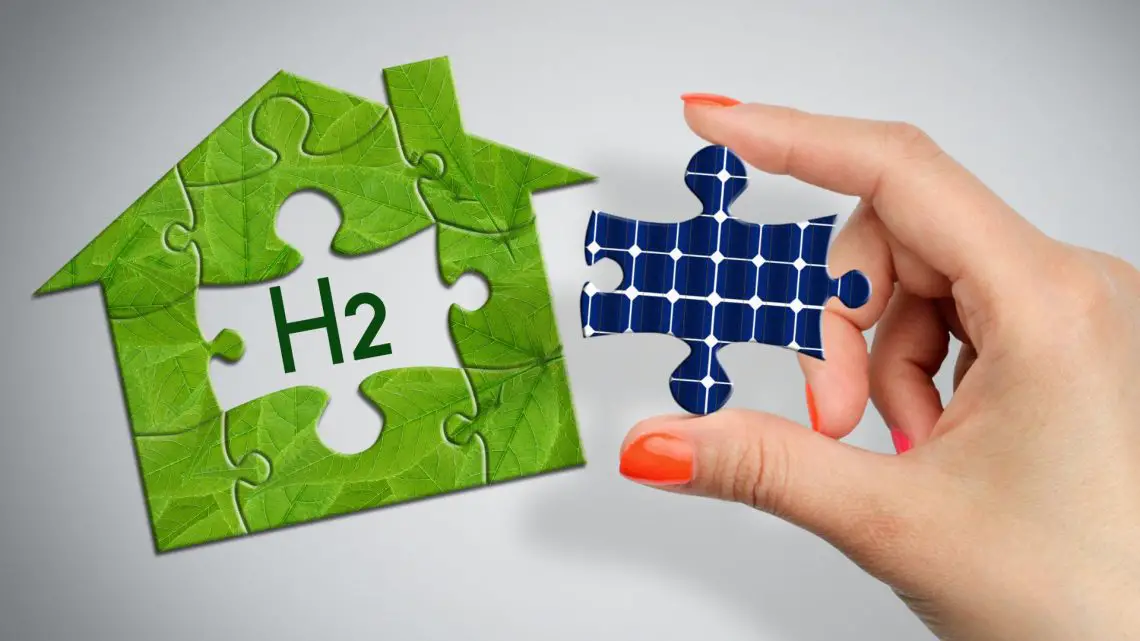
From Fragile to Fierce: How Hydrogen Bonds Transform Solar Energy
December 29, 2024Hydrogen-Bonding Additives Boost Solar Cell Efficiency and Stability
A groundbreaking technique has been developed that enhances the performance and stability of perovskite solar cells, thanks to the introduction of hydrogen-bonding additives. This research, published in Energy & Environmental Science, was led by the collaborative efforts of Professor Choi Jong-min’s team at the Department of Energy Science and Engineering at Daegu Gyeongbuk Institute of Science and Technology (DGIST) and Dr. Moon Byung-joon’s group at the Korea Institute of Science and Technology.
The discovery not only addresses a key challenge in solar cell manufacturing but also advances our ability to produce more durable and efficient solar technologies – a critical step in the transition to renewable energy.
The Promise and Challenges of Perovskite Solar Cells
Perovskite materials are increasingly recognized for their potential to revolutionize solar energy. They offer high efficiency in converting sunlight into electricity and are relatively easy to produce. Compared to traditional silicon-based solar cells, perovskite cells stand out for their potential affordability and versatility in application.
However, there’s a significant drawback. Over time, the manufacturing solution used in perovskite cells starts to decompose, breaking apart into ions, which promotes the formation of impurities. These impurities can degrade the solar cells’ performance, and the problem worsens at high temperatures, making it a hurdle in developing stable and durable perovskite solar cells.
How Do Hydrogen-Bonding Additives Help?
To tackle this issue, Professor Choi’s research team introduced hydrogen-bonding additives into the perovskite solution. These additives form hydrogen bonds with organic molecules, protecting the perovskite material from rapid changes. Essentially, the hydrogen bonds act as a stabilizing glue, mitigating the damage caused by decomposition or temperature variations.
Using computer modeling, the researchers demonstrated that these hydrogen bonds could maintain the structural integrity of the solar cell materials over time. The experimental results were impressive. Perovskite solar cells produced from solutions stored for 140 days retained 96.7% of their original efficiency, proving the additive’s ability to sustain material stability over extended periods.
The efficiency jumps were notable too. The power conversion efficiency increased from an already commendable 22.61% to a higher 24.31% when hydrogen-bonding additives were used. This improvement was accompanied by enhanced thermal stability. Even after being exposed to high temperatures of 85 degrees Celsius for 72.5 days, the solar cells retained over 98% of their initial performance.
Why Is This Discovery Important?
The ability to keep perovskite materials stable while improving their performance is pivotal for advancing solar technology. Inefficient or short-lived solar cells reduce the appeal of renewable energy solutions, especially for long-term infrastructure projects. By addressing the twin challenges of instability and efficiency loss, this discovery paves the way for broader adoption of perovskite cells.
Additionally, the innovation could accelerate efforts toward scaling up production. Manufacturers would no longer need to worry as much about the perishable nature of their perovskite solutions, as the additives ensure solutions maintain their integrity for months. This could substantially reduce waste and costs in production.
But the significance goes beyond solar panels. The mechanism of using hydrogen bonding to stabilize materials could inspire advancements in other areas of renewable energy and materials science.
What Does This Mean for Hydrogen Technology?
Hydrogen’s role in renewable energy has primarily been as a fuel. But this study highlights its potential contribution at the molecular level. Hydrogen bonds, though subtle, influence the structural stability of materials. The use of hydrogen-bonding additives in perovskite cells demonstrates how molecular interactions could be harnessed to tackle real-world challenges like thermal degradation.
This could lead to cross-disciplinary studies where hydrogen-bonding mechanisms are applied in other energy technologies, such as hydrogen storage materials or advanced battery systems. It expands how we think about hydrogen’s potential in shaping the future of energy.
How This Technology Can Be Applied Now
The insights gained from this research hold immediate applications in the solar industry. Solar panel manufacturers could implement hydrogen-bonding additives in their perovskite-based solutions to produce panels with longer lifespans and better efficiency. For consumers, this means getting solar technology that performs more reliably over time, reducing maintenance and replacement costs.
Given the growing demand for renewable energy, these additives could help integrate solar technology into larger networks, including residential, industrial, and even utility-scale installations. Governments and energy providers could use these more durable solar cells for ambitious renewable projects, meeting sustainability targets while ensuring cost efficiency.
Moving Forward
Looking ahead, the implications of this discovery are vast. Future studies could refine the additive formulations to push efficiencies even higher or explore other applications for this technology in energy storage and hybrid systems. If perovskite cells continue to improve at this rate, they could soon rival—or even surpass—silicon cells in widespread implementation across the globe.
While obstacles remain, like commercial scaling and material compatibility, this research represents a leap forward in solving one of solar technology’s most persistent challenges. By stabilizing the foundation of perovskite cells, researchers have not only enhanced their performance but also bolstered their potential as a renewable energy powerhouse. With continued innovation, hydrogen-bonding additives could mark the beginning of a new era in solar energy applications.



 With over 15 years of reporting hydrogen news, we are your premier source for the latest updates and insights in hydrogen and renewable energy.
With over 15 years of reporting hydrogen news, we are your premier source for the latest updates and insights in hydrogen and renewable energy.